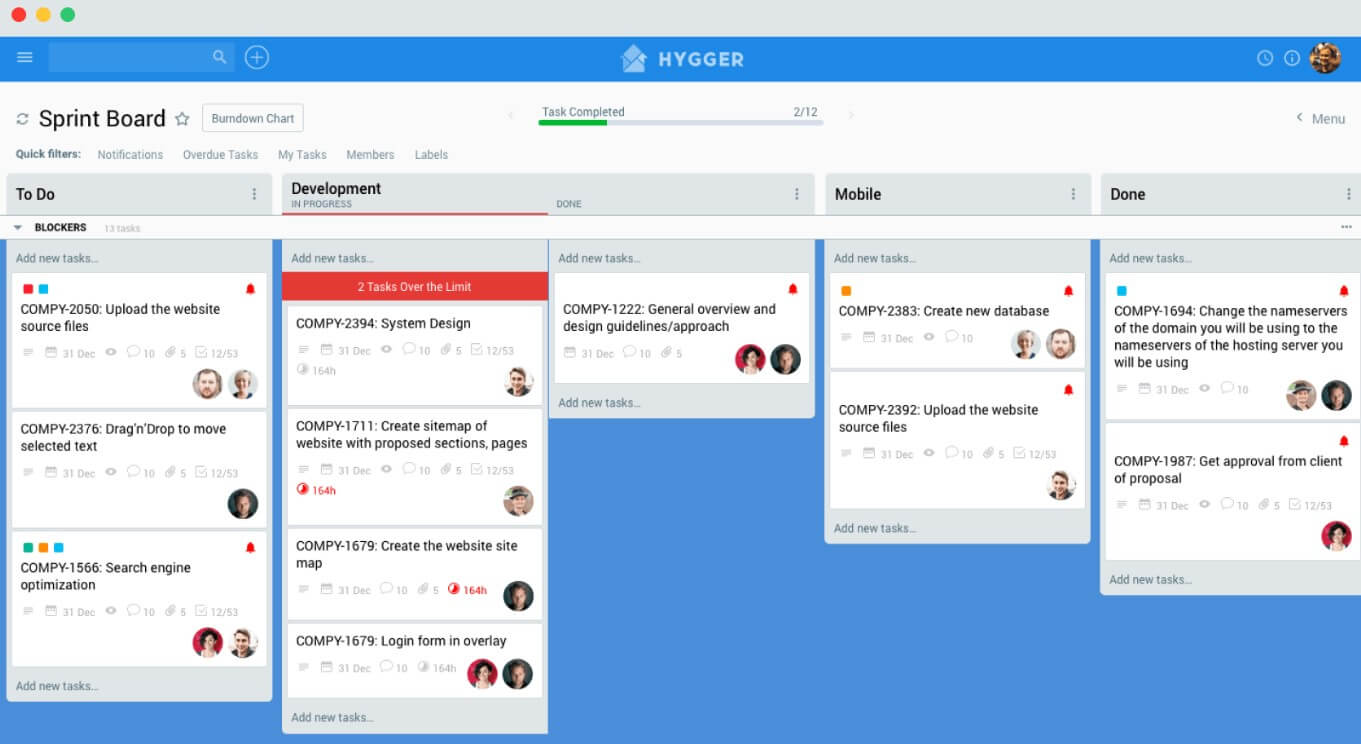Scrum Quickstart Guide 2020: Everything You Need To Know

Scrum is a well-established Agile project management methodology that is widely practiced. Many software engineers and project managers practice Scrum, but still, some of them may not know the exact definition of it.
Scrum is a framework that enables the teams to resolve complex dynamic problems, with a productive and creative way of delivering products that have the highest possible value.
What is the Scrum Guide?
The Scrum Guide is the initial source created by Ken Schwaber and Jeff Sutherland that has defined Scrum as a framework for project and product management. Scrum is a framework within which various processes and techniques are used. It may seem lightweight and easy to understand but difficult to master.
When was the Scrum Guide written?
The first version of the Scrum Study Guide was published in 2010. It was the attempt to define Scrum, and help practitioners understand the rules of the game. However, some people think that it was not the first attempt to articulate the Scrum framework. So let’s think that the first version of the Guide was written between 2008 and 2010. Scrum was being used in industry for decades before 2008, but the guide in 2010 was Schwaber and Sutherland’s first attempt to distill the framework into a short, freely available document, a definition of sorts.
The Guide was translated into over 30 languages. The last revised version of the Scrum User Guide was published in November 2017.
What are the roles in Scrum?
The Scrum methodology contains 3 main roles:
- Product Owner is in charge of specialized management of all items related to a product. Due to the organization of work – Product owners should ensure that all team members are familiar with the items in the Product backlog. They are responsible for managing the Product backlog. During the realization of the project – they allocate these items from the backlog into the sprint.
- Scrum Master – organizes the team in the process of developing the plan, trains the team in order to implement the methodology, and removes obstacles in the implementation of the methodology and overall project development. The scrum master has a managerial role during project development. Scrum Master is responsible for ensuring that the project is carried out according to the rules, values, and processes of the Scrum lifecycle, and it is progressing as planned. He is also responsible for keeping the team spirit up.
- Development Team – team members are those who are performing working tasks and produce the deliverables within a Sprint. This involves developers (programmers), QA/testers and business analysts. The development team owns the Sprint backlog and is entrusted and dedicated to accomplish the goal of the Sprint. Those teams are self-organizing teams and therefore all team members should share some common values. These values include respect, openness, courage, focus, and commitment. Scrum teams also share empirical thinking principles: adaptation, inspection, and transparency.

Delivery speed
The delivery speed is an important issue of Agile software development. However, agile speed is different from physics velocity. The speed is the volume that a team can deliver within a Sprint. It is a team metric and not project metric, so different teams have different speeds. For example, some teams may deliver 50 user stories (points) in a Sprint. To possess good speed, the manager should assign projects to teams, and not establish a new team for every project. The good speed is constant and predictable, not increasing, and of course – not decreasing.
The term Sprint represents the period lasting from 15 to 30 days (the length is determined by the team), in which the team creates software products (increment). During the Sprint – the team should deliver the highest viable business value.
Definition of Done
The term ‘Done’ (DoD) must be determined on the start and agreed by all stakeholders. At the end of a Sprint – the product owner will expect all the tasks to be completed according to the definition of Done. The Done definition means that the development team will know precisely what should be completed in order to be declared as done. This definition brings transparency and leaves no room for subjective interpretation. Also, the important point is that the Done definition should be achievable and realistic while providing the required level of quality.
Events/ activities: What are the 5 Scrum ceremonies?
By definition – there are 5 main activities within a Sprint:
- Sprint Planning
- Daily Scrum
- Product Backlog Refinement
- Review
- Retrospective

Spring planning/ Daily Scrum meeting and the Backlog
Sprint Planning’s goal is to answer 2 main questions: what and how. The product owner gives a list of product backlog items and the development team estimates which of them it will deliver in the Sprint. The ‘how’ part needs more details. The outcome of the Sprint planning meeting is that the development team knows exactly what should be developed, and deals as a self-organizing team to deliver the features agreed for the upcoming Sprint.
Daily Scrum meetings are short morning meetings, lasting about 10-15 minutes. The whole team is present and led by the Scrum master. During these meetings – they talk about three main issues: to re-visit what was done yesterday, to define the goals for today, and to check to see if there are any obstacles to peaceful work. Additionally, in the case when they program in pairs, they need to define who is who in the hand.
The product backlog is a list of features and properties expected by the final product. Features in the list are arranged in order of priority from the most important to the least important. The project can be defined to implement big tasks that are divided into several smaller ones. The project team determines how much work is needed to be done for the application.
Review and retrospectives
The review meeting is held at the end of a sprint and the Scrum team, as well as stakeholders, should attend it. This means that once you have finished the functionality, you should carry out a review meeting in the sprint, so you can explain the functionality and how it works to the client. In this way – the client will confirm that he accepts a feature and that it was made in accordance with his expectations. However, this is not the user’s acceptance testing; the goal of this meeting is to check the completed features, provide feedback to the team, and facilitate the collaboration between stakeholders and the development team.
The retrospective meeting should be done as a finite of the iterative development (1-hour meeting, for 2-week duration sprints). The meeting should be attended by all of our team, and the client may also participate. The topic of the meeting is how to improve the process, tools used, communication issues, quality of our work, lessons learned, training, etc. You can use the matrix with the division into sections: stop, start, and continue. The ultimate goal is to ensure that the code is bug-free and it’s functioning.
Run Scrum with Hygger
Hygger.io offers handy and powerful online Scrum boards for Agile software development. You van use Hygger functionality to manage your product backlog and run Sprints with selected stories and tasks.

With the help of Hygger, you are able to:
- Plan Sprints. Score features, pick out the right ones from the top of the prioritized backlog.
- Run Sprints and track progress. Start as many Sprints as you need and track their status using Burndown Chart and Sprint Progress Tracker.
- Categorize tasks with Swimlanes and Labels.
- Estimate tasks and track time in time tracking reports.
- Limit Work in Progress.
Analyze Sprints’ results in the Sprint release report and track the team’s productivity on Velocity Chart. - Use the Hygger roadmap to share global plans and closest releases to the whole company.




